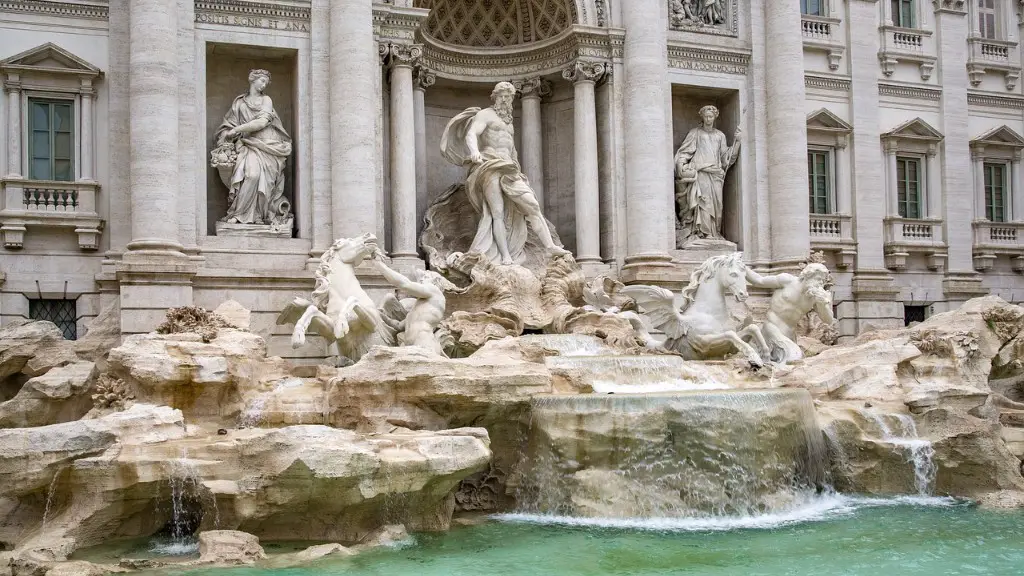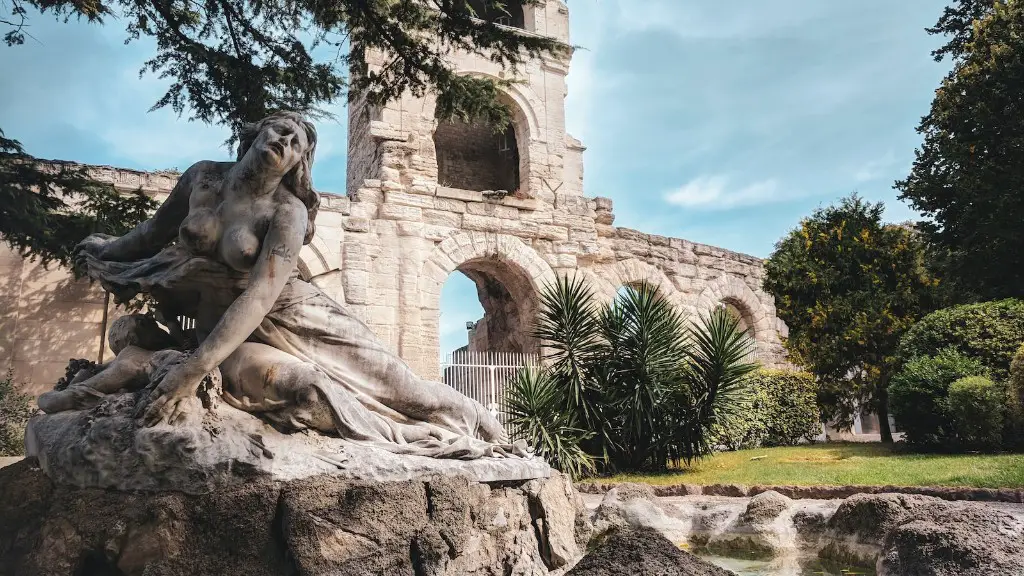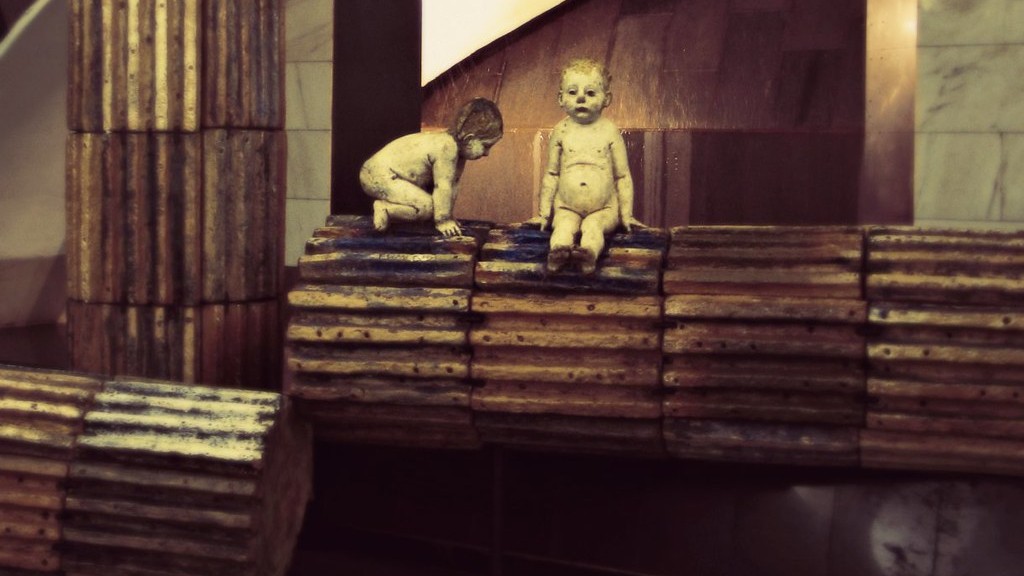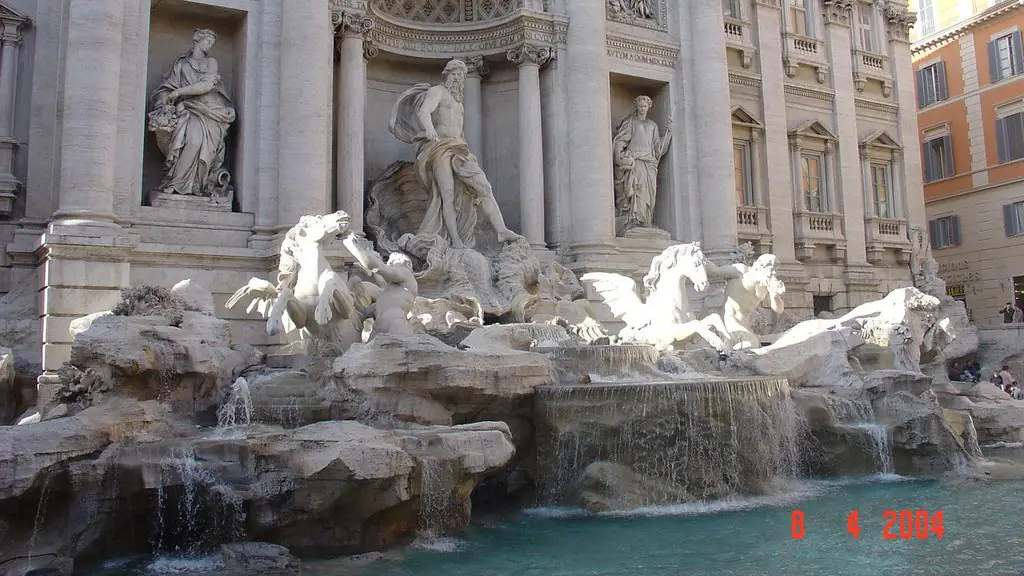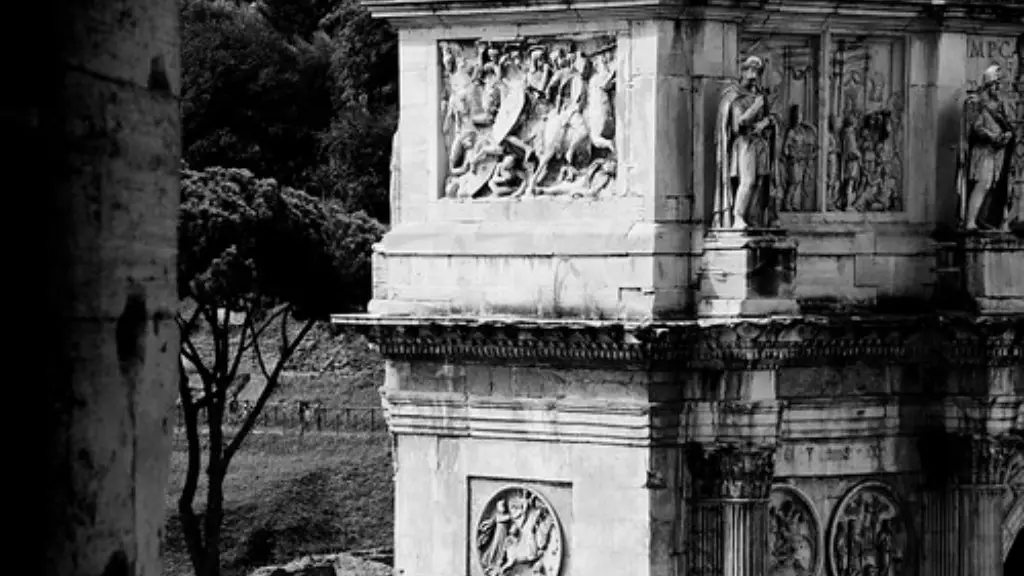Ancient Rome’s economy was prosperous due to its many conquerings, optimal agricultural land, and an abundance of slave labor. Rome’s land was relatively flat and had few obstacles which made transportation and trade much easier. Its location also allowed the Romans to trade with many different types of people and cultures. The soils in Italy were also very productive which allowed for large surpluses of crops. This allowed Rome to become a very wealthy city.
The economy of ancient Rome was based on trade and market exchange. The main economic activities of ancient Rome were agriculture, manufacturing, and mining. The Roman economy was largely based on barter and prices were set in terms of commodities. The Roman Empire was self-sufficient in food production and the main crops grown were wheat, barley, and olives. Vast estates (latifundia) were worked by slave gangs and large estates were also worked by tenant farmers (coloni). There was a high level of social mobility in ancient Rome and upward mobility was achieved through military service, political office, and successful business ventures. The Roman economy was also based on tax revenue collected from the provinces. The Roman government imposed tariffs on imported goods and taxed exports. The Roman currency was the denarius, which was a silver coin.
What did the economy trade in ancient Rome?
Farming was a large part of the Roman economy and many of the exports were food or products made from crops. Grapes, oil, and grain were a few of the major exports. From these crops, items such as olive oil, wine, and cereals were also made and exported. Other exports included pottery and papyrus (paper).
The Roman Market Economy is a fascinating book that uses the tools of modern economics to show how trade, markets, and the Pax Romana were critical to ancient Rome’s prosperity. Peter Temin, one of the world’s foremost economic historians, argues that markets dominated the Roman economy. This is a must-read for anyone interested in economic history or the history of Rome.
Why was the Roman economy successful
A standardized currency facilitated trade across the growing Roman world. Coins could be exchanged for any goods or services and were easy to transport. Currency made it easier to relocate and direct resources, and this in turn encouraged more economic interactions.
The Roman Empire was one of the most powerful empires in the world for centuries. However, by the end of the empire, many of the problems that led to Rome’s decline were due to government and economic corruption. Rome’s economy was based on slave labor. By relying on slave labor, there was a large gap between the rich and the poor. The rich grew wealthy from their slaves while the poor could not find enough work. This led to unrest and eventually the fall of the Roman Empire.
Did ancient Rome trade or use money?
The Romans were very successful in trade because they made it as easy as possible. There was only one currency used and there were no complicating customs dues. Trade was also encouraged by many years of peace within the Empire. Trade was vital to the success of the Empire.
The social structure of ancient Rome was based on heredity, property, wealth, citizenship and freedom. It was also based around men: women were defined by the social status of their fathers or husbands. Women were expected to look after the houses and very few had any real independence.
How did Rome build its economy?
The Roman economy was based on agriculture and mining. Large farms were run by slaves who cultivated the land and produced food. Romans also mined for minerals and metals, which were used to make coins and jewelry. Rich Romans could afford to buy luxuries from all over the world.
The Italian economy is a highly developed social market economy. It is the third-largest national economy in the European Union, the 10th-largest in the world by nominal GDP, and the 12th-largest by GDP (PPP). The country’s advanced economy is the 8th largest in the world by nominal GDP, and that of the European Union is the 2nd largest.
Italy has a diversified and advanced industrial sector, a large and competitive service sector, and a large agricultural sector. The country is known for its high levels of productivity, and its economy is characterised by a high level of private and public consumption. Italy is a founding member of the European Union and the Eurozone.
The Italian economy is characterised by a high level of private and public consumption, a large and diversified industrial sector, and a large and competitive service sector. The country is known for its high levels of productivity, and its economy is characterised by high levels of private and public consumption. Italy is a founding member of the European Union and the Eurozone.
Was Rome a capitalist economy
Both Ancient Athens and Rome were early examples of capitalist societies, with diverse social hierarchies relative to modern standards. In Athens, there was a strong emphasis on personal freedom and the ability to own property, while Rome placed a greater emphasis on the collective good. Both societies had comparable levels of economic inequality, with a large gap between the haves and the have-nots.
The economic crisis of 33 CE was caused by a law that required creditors to invest a proportion of their capital in Italian lands. This law had been in effect for some time, but it was not being enforced. When it was revived, it caused a severe economic crisis.
How was Rome able to be so successful?
The Roman Empire was so successful due to their dominance in warfare as well as their stable political structure. The empire was able to be so successful because the Romans were very practical and well organized people. They were also ambitious and aggressive when it came to obtaining anything that the Romans desired.
The Roman Empire was in a state of decline by the time of Diocletian. Commerce had all but disappeared due to a lack of customers, piracy, and insecurity on the roads. This decline led to a number of problems for the empire, including a loss of tax revenue and a decline in military power.
Did the Roman Empire have economic inequality
The fall of the Roman Empire was caused by many factors, but one of the most significant was the gaping inequality between the rich and the poor. The top 1% of the population controlled a staggering 16% of the wealth, while the bottom 99% had to make do with just a meagre 84%. This huge disparity led to widespread unrest and eventually, the collapse of the once great empire.
The Roman Empire was organized primarily to benefit the upper strata of society, the landlords rather than the peasantry, the rich more than the poor, the masters and certainly not the slaves. Above all, power and economic benefit were concentrated in the office of the emperor.
What was the main source of income in ancient Rome?
Agriculture was the cornerstone of the Roman Empire’s economy and it employed the vast majority of the empire’s population. Roman agriculture was highly efficient and it allowed for a wide variety of foodstuffs to be produced. The main crops grown were wheat, barley, olives, grapes, and dates. Roman farmers also raised sheep, pigs, and cattle. Roman agriculture was so efficient that the empire was able to export a large amount of food.
The Romans were able to transport goods from one country to another using their network of roads and waterways. They traded with Britain for silver, which they used to make jewellery and coins, and wool which they used to make clothes.
Final Words
The Roman economy was based on trade and commerce. The Romans traded with other countries in Europe, Africa, and Asia. They imported goods such as wine, olive oil, and spices. They also exported goods such as iron, timber, and grain.
The ancient Roman economy was one of the most robust and complex economies in history. It was a fundamentally agricultural economy with a wide range of industries and a thriving trade system. The ancient Roman economy was incredibly diversified and was able to support a wide variety of people and businesses.
